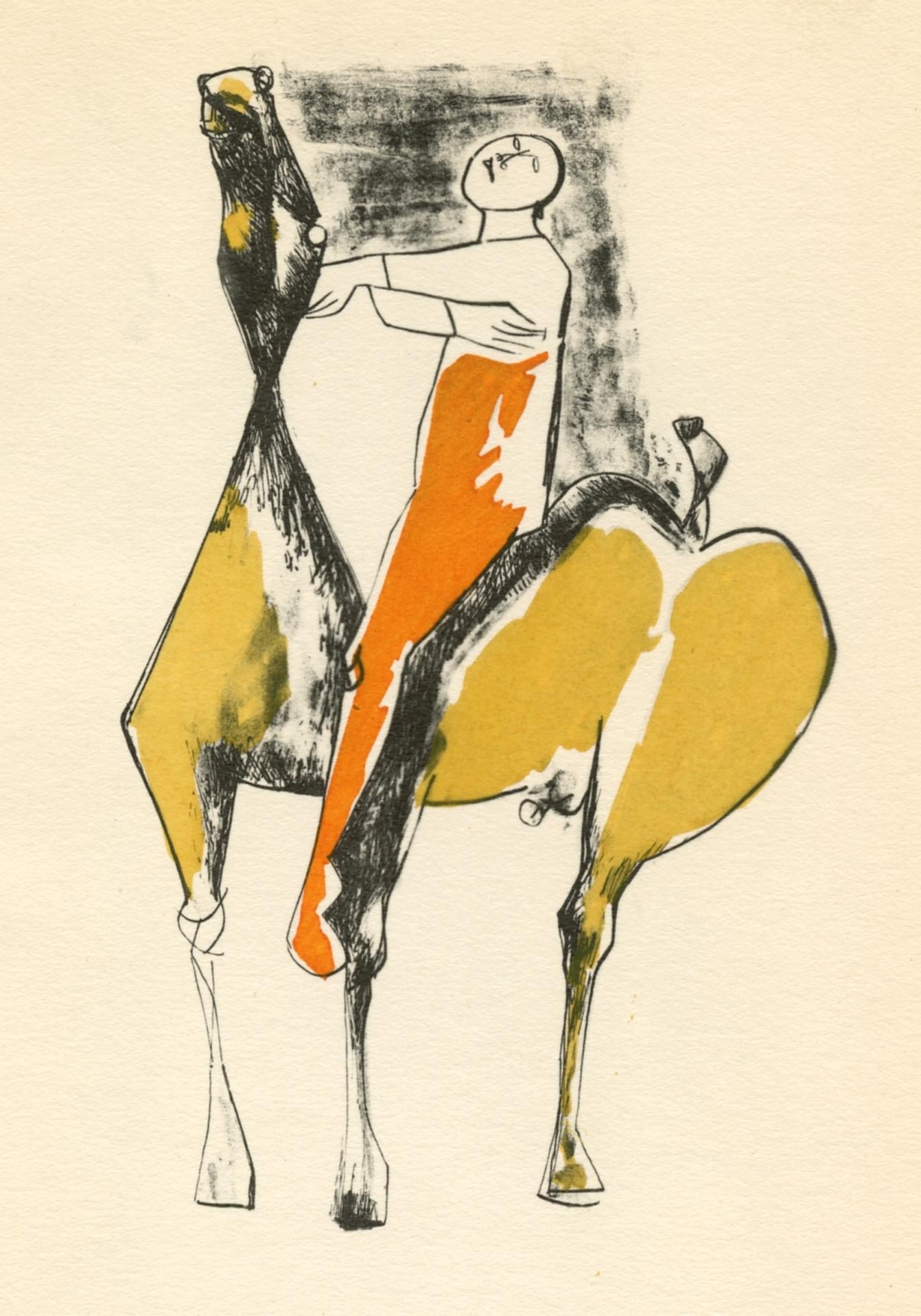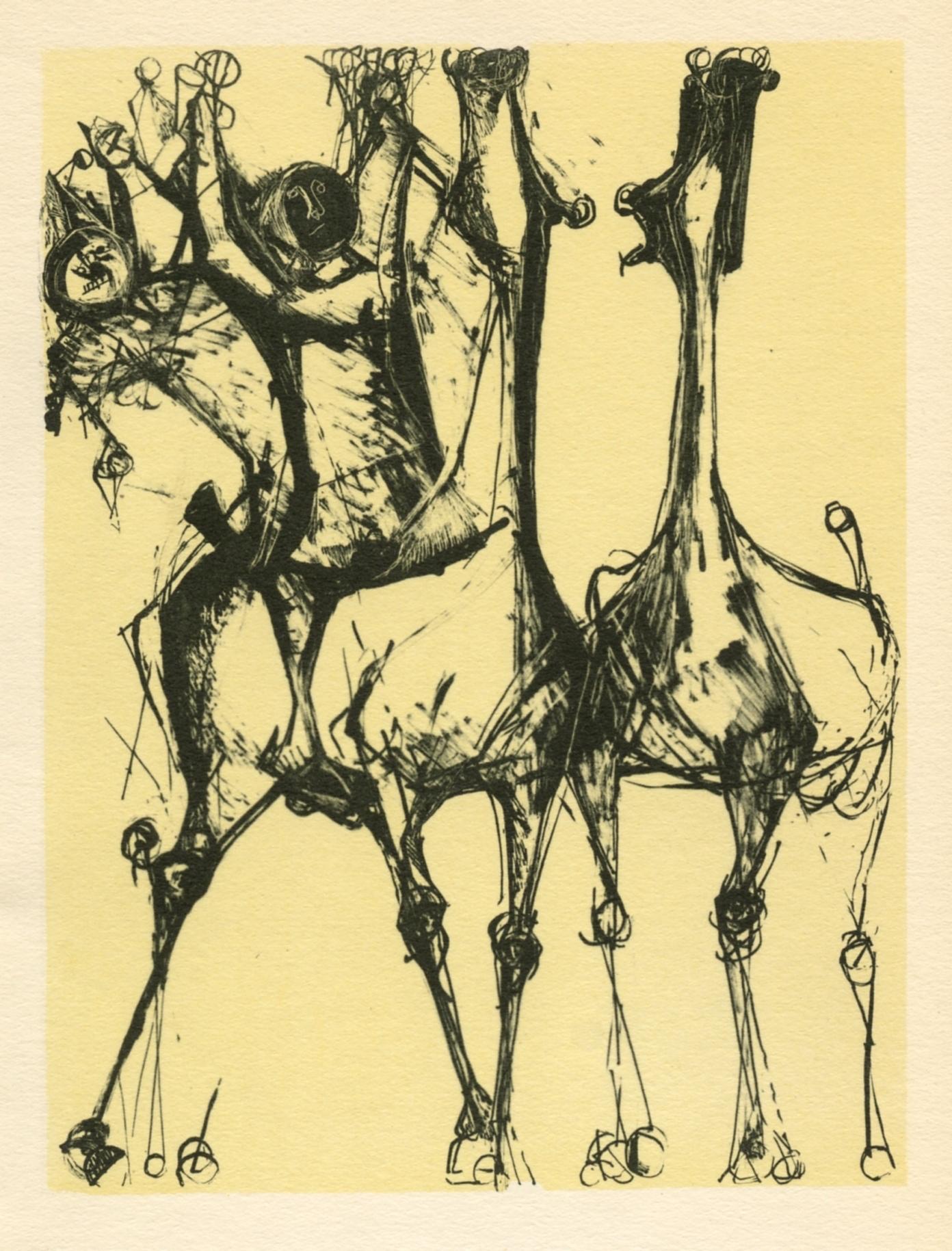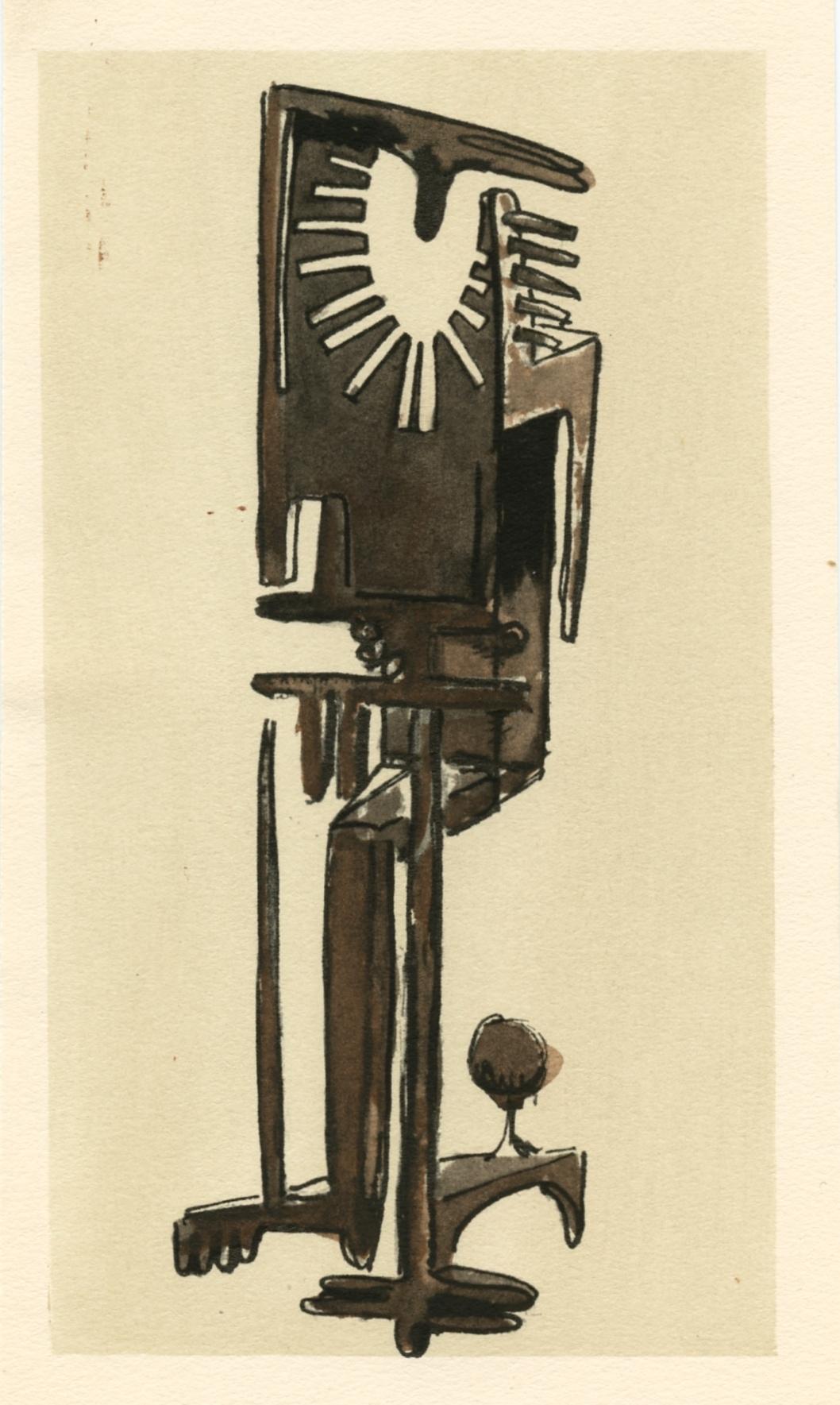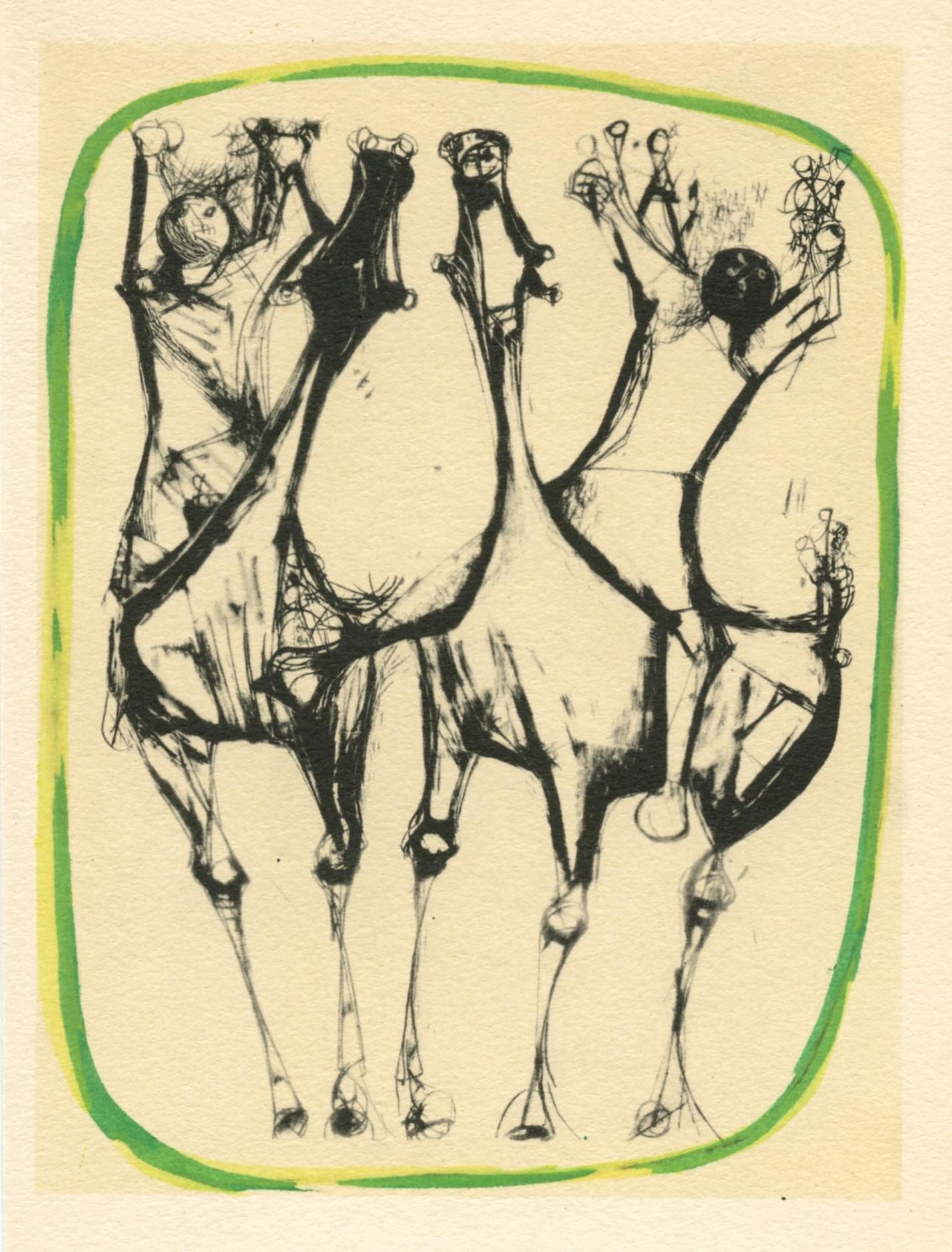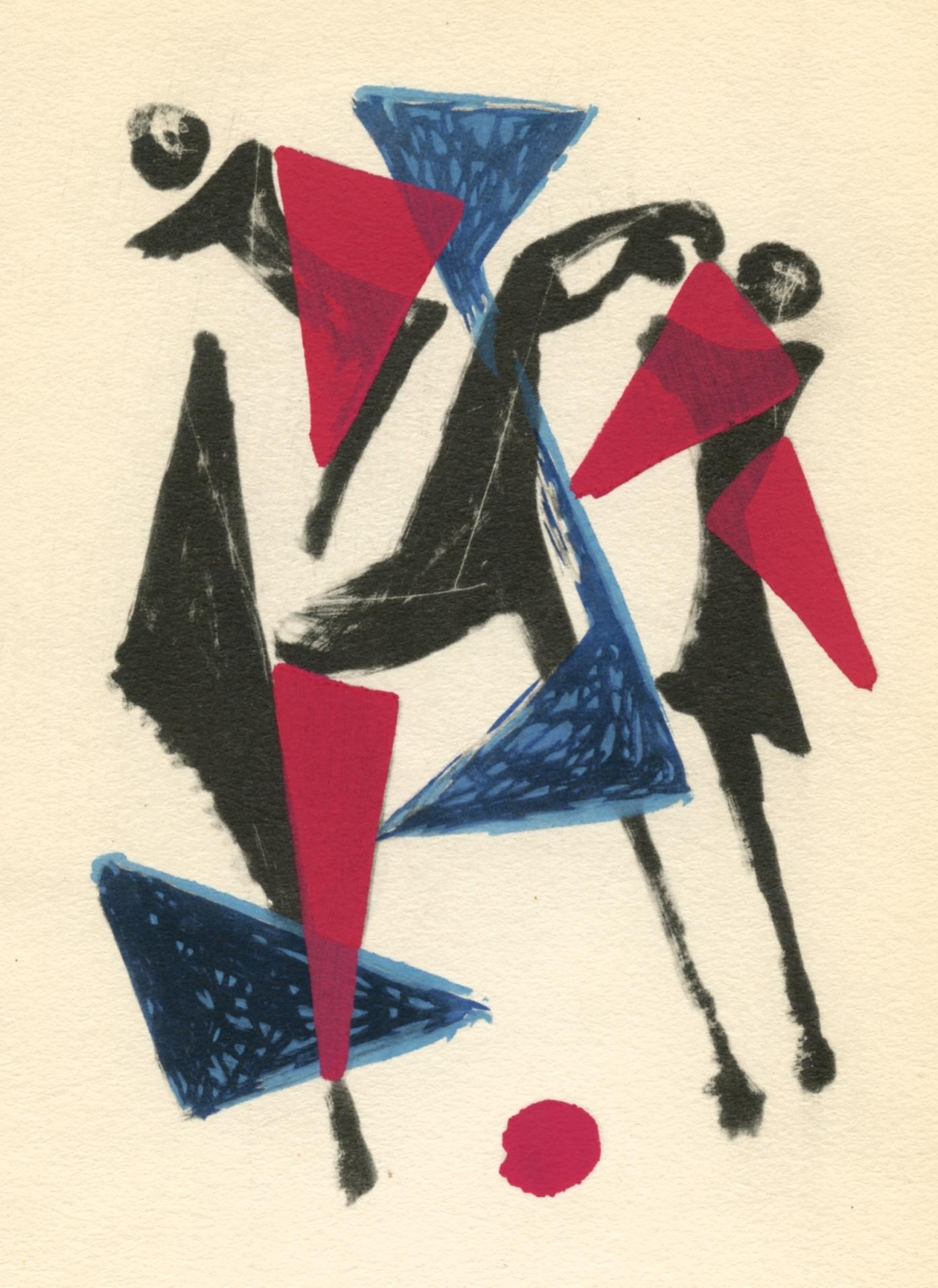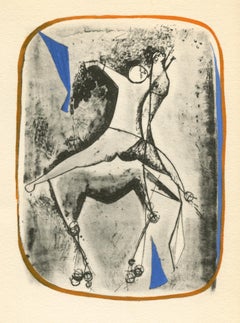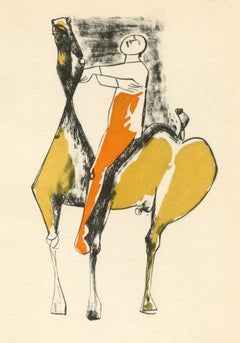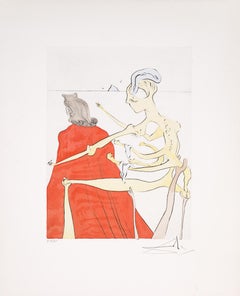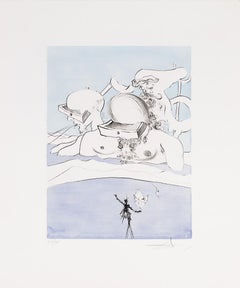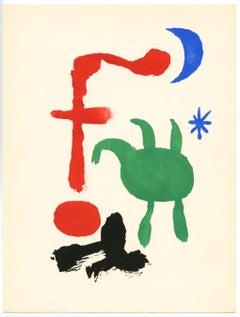
"Femme et Oiseaux dans la Nuit" original pochoir
View Similar Items
Joan Miró"Femme et Oiseaux dans la Nuit" original pochoir1947
1947
About the Item
- Creator:Joan Miró (1893 - 1983, Catalan)
- Creation Year:1947
- Dimensions:Height: 10.95 in (27.8 cm)Width: 8.27 in (21 cm)
- Medium:
- Movement & Style:
- Period:
- Condition:Condition: there is minor creasing (mostly near the edges of the sheet).
- Gallery Location:Henderson, NV
- Reference Number:1stDibs: LU2365211691622
Joan Miró
With his wide-ranging oeuvre, comprising strikingly original paintings, prints, ceramics, sculptures, metal engravings and murals, Catalan modernist Joan Miró was a critical force in moving 20th-century art toward complete abstraction. Although often considered an early Surrealist because of his nonobjective imagery and evocation of the subconscious, he defies neat categorization.
Miró’s identity is largely rooted in the city of his birth: Barcelona. To this day, a number of his public artworks can be found there, including the 72-foot-tall statue Dona i Ocell (Woman and Bird), 1983. Female and avian forms, along with bright colors and the theme of Catalan pride, are recurring elements in his work.
The radical visual world Miró created with his expressive lines, signature symbols and biomorphic shapes influenced such American Abstract Expressionists as Jackson Pollock and Color Field painters like Mark Rothko and Barnett Newman.
Mirò continued to work and experiment until his death at the age of 90 in 1983. Five years before that, he was quoted saying, “I painted these paintings in a frenzy, with real violence so that people will know that I am alive, that I’m breathing, that I still have a few more places to go. I’m heading in new directions.”
Find a collection of original Joan Miró art on 1stDibs.
More From This Seller
View All1950s Surrealist Prints and Multiples
Lithograph, Stencil
1950s Surrealist Prints and Multiples
Lithograph, Stencil
1950s Surrealist Prints and Multiples
Lithograph, Stencil
1950s Surrealist Prints and Multiples
Lithograph, Stencil
1950s Surrealist Prints and Multiples
Lithograph, Stencil
1950s Surrealist Prints and Multiples
Stencil, Lithograph
You May Also Like
1950s Surrealist Animal Prints
Stencil, Lithograph
Early 20th Century Surrealist Figurative Prints
Stencil, Lithograph
20th Century Surrealist Prints and Multiples
Stencil, Etching
20th Century Surrealist Prints and Multiples
Stencil, Etching
1930s Surrealist Abstract Prints
Color, Stencil
1950s Surrealist Animal Prints
Stencil


